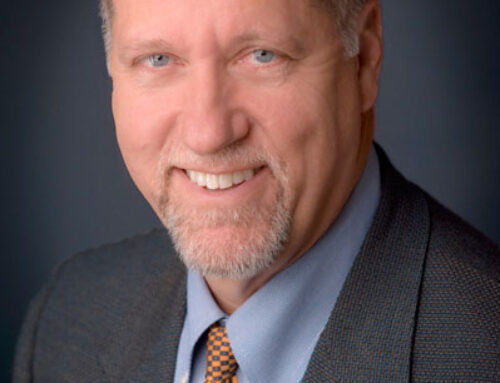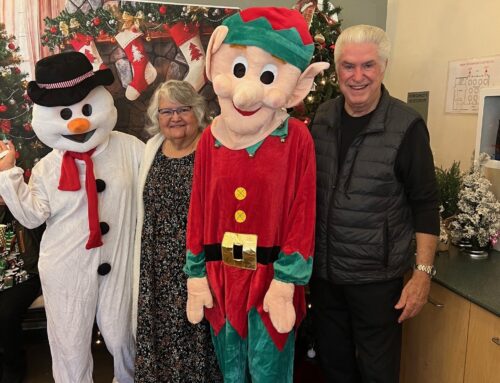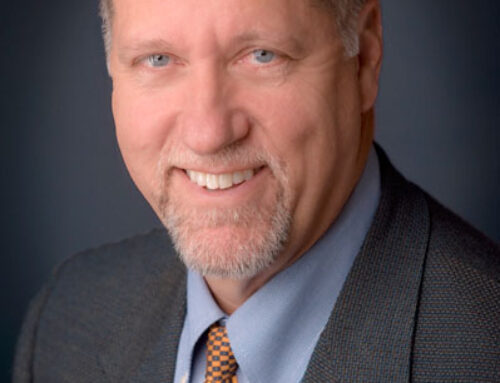Peter Anderson raises more than $12,000 to help find cure for polio
Published in the March 29 – April 11, 2017 issue of Morgan Hill Life
By Benjamin Siepak

Morgan Hill Life file photo — Morgan Hill Rotarian and retired geologist Peter Anderson hiked to the Base Camp of Mt. Everest in October to raise money for PolioPlus.
Weight was not a problem for 72-year-old Peter Anderson as he hiked 18,200 feet in altitude in below-zero weather while carrying a 20-pound backpack strapped across his chest. Carrying the weight of 30 pending Rotary clubs donations toward eradicating polio, however, was heavier than anything he had ever hiked with before.
The Morgan Hill resident, Rotarian and retired geologist, added some extra incentive to tackling a long-awaited hike up the Himalayas by making a pact with Rotary clubs stretching globally across the United States, Mexico, Argentina, Nigeria and Nepal.
“About 12,000 to 14,000 dollars were hanging in balance,” Anderson said.
He promised he would hike with a banner from each club, and take a picture with each of them once he made it to Base Camp, with Mt. Everest in the background. Each club agreed to make a donation toward PolioPlus, Rotary International’s worldwide campaign to wipe out polio.
Hiking to Base Camp does not mean summiting the top of the world’s highest peak. Nearly every climbing expedition starts at the base of the respective mountain, which can be quite the quest in itself. Mt. Everest Base Camp is nearly 17,500 feet in altitude, but Anderson went even a bit higher to Kala Patthar, a notable landmark on the south ridge of the Himalayas.
Being the eldest in a group of 10 on the hike last October, several close relatives to Anderson cautioned him not to move forward with the hike, which took four months to prepare for.
“There are two main challenges,” he said. “First, it’s the strength of your legs and endurance. And the other is dealing with the altitude.”
To prepare for the arduous adventure, Anderson set himself on a rigorous endurance routine by running six to 10 miles, four to five days a week. As for altitude, preparation is limited.
“People start to die on these kind of hikes at 12,000 to 13,000 feet.,” Anderson said. “Really, there’s no way to train for altitude than to be at altitude.”
Adverse health effects are a common result of the unfamiliar high altitudes, but Anderson was grateful to avoid any mountain sickness.
“Coming face to face with real life hazards that can end your life, you develop a respect for the mountains, what they can do to you,” he said. “I knew my comfort level and my comfort level is pretty low — I didn’t want to put myself at risk.”
Anderson was well-equipped for the cold, post-monsoon October weather. He knew what to carry, as mountaineering has been a hobby of his since his college days in Maine. He has hiked the Sierra Nevada on numerous occasions.
What he didn’t envision was that his hike would have an impact in eliminating polio. In 1979, a Rotary club in the Philippines decided to take on the challenge of eradicating polio in their country, and it only took them five years to successfully do so.
Following their success, the Rotary International leadership group decided to make the campaign global. In 1985 PolioPlus was born. PolioPlus is the worldwide campaign with the polio vaccine “plus” vaccines for measles and other infectious diseases. PolioPlus has proven to be a success and the dreaded disease is on the brink of complete eradication.
“We have almost conquered it,” Anderson said. “When we started there were roughly 350,000 new cases of polio every year all over the world. Last year there was 37. This year so far, there has only been one case.”
What Anderson values the most about the experience wasn’t the fact that he finally achieved a longtime interest, nor was it the breathtaking views. It was the rewarding feeling of finally taking out 30-plus banners from his backpack — four pounds he sacrificed that could have been filled with clothes and food.
Ten days from the start of the journey and looking up at the craggy crest of Mt. Everest, the Morgan Hill Rotarian finally had a moment to let it all sink in: “I had a chance to sit there and say, ‘I came for this…. and I did it.’”






